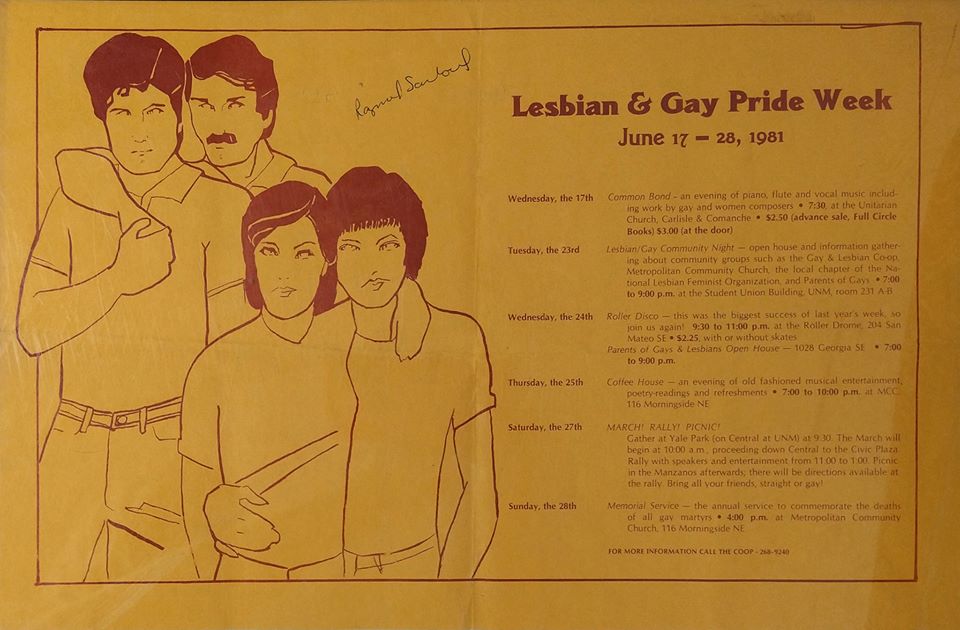The Stonewall riots began in Greenwich Village after 1 am on June 28, 1969, and they continued with varied levels of intensity through July 3rd. For those who witnessed or heard about the events, the rebellion sparked a sense of urgency for change. Stonewall’s aftermath inspired new organizations and new tactics, in New York City and across the country.
This pressing desire for action resonated in New Mexico too; organizers in Albuquerque attempted to form a chapter of the Gay Liberation Front at UNM in 1970. By 1975, activist energy in Albuquerque coalesced around two organizations, a local group called Juniper and the Metropolitan Community Church, both of which focused on community, support, and self-acceptance in the face of mainstream prejudice. In 1976, these organizations co-hosted the first Pride march in Albuquerque with about 25 participants, no permit, and no media attention.
100+ marchers from the MCC, the Gay Co-op, and Lambdas de Santa Fe again celebrated “Christopher Street Resistance” in Albuquerque in 1977, chanting “Out of the closets, into the streets.” The featured speaker that year was Mattachine Society founder (and New Mexico resident) Harry Hay, who called for a “coalition among all scapegoat minorities—Indians, Chicanos, Blacks, women in the women’s movement, and gays.” The marchers’ cars were egged, they were booed and heckled (but also cheered), and a local church passed out “Gay No More” pamphlets. Undaunted, one woman told a reporter for the alternative newspaper Seers Rio Grande Weekly that “The homophobes and hatemongers will just have to look out ‘cause we’re coming out and we’re not going back.”
By 1981, when this Lesbian & Gay Pride Week program was created, Pride was organized by the Gay Co-op. Around that time, 1980 or 1981, one woman marched with a paper bag over her head, a compromise since she wanted to be a part of the public demonstration but was worried that being out could cause her to lose her job or her son.
These early parades might have been the first time that Albuquerque locals could see how many gay people, often talked about in the abstract or singly, were members of the community: neighbors, friends, family, coworkers, and teachers. But, it is important to note, these celebrations and demonstrations weren’t for the straights, they were for the gay community and for liberation.
Albuquerque Pride gave us permission to post their copy of this 1981 program, signed by the artist, Ray Sandoval.

Happy Pride! May we roller disco again soon!

